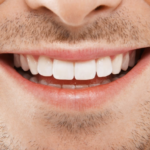Rhinoplasty, commonly known as a nose job, is a popular cosmetic and functional surgery designed to reshape or reconstruct the nose. Whether performed for cosmetic reasons, to address breathing difficulties, or a combination of both, rhinoplasty can lead to significant aesthetic and functional improvements. However, the recovery process following rhinoplasty is an essential part of the journey. Understanding what to expect during recovery and how to care for yourself post-surgery can help ensure a smooth and successful healing process. This article provides insights and tips on what you can expect during your rhinoplasty in Dubai(تجميل الأنف في دبي ) recovery and how to optimize your healing.
Immediate Post-Surgery Care
Right after the surgery, you will experience some discomfort, swelling, and bruising around the nose and eyes. This is entirely normal and should subside within the first few days. You will likely have a splint or bandages placed on your nose to help maintain its shape and support healing. It’s essential to follow the specific post-surgical care instructions provided by your surgeon. These may include applying ice packs to reduce swelling, keeping your head elevated while resting, and avoiding any strenuous activities that could impact the healing process.
Managing Swelling and Bruising
Swelling and bruising are the most common side effects after rhinoplasty, and they can last for several days to weeks. The swelling may be most pronounced during the first few days, especially around the eyes and nose, but it should gradually decrease as your body heals. Applying ice packs to the affected areas during the first 48 hours can help reduce swelling. Sleeping with your head elevated and avoiding bending down can also help keep swelling to a minimum. Over time, the swelling will continue to reduce, but minor swelling may persist for up to a year, particularly at the tip of the nose.
Pain and Discomfort Management
Most patients experience some level of discomfort during the initial recovery period after rhinoplasty. However, the pain is typically manageable with prescribed pain medications or over-the-counter pain relievers. It’s essential to take the medication as directed to stay comfortable and avoid overexertion. Be mindful of any side effects from pain medications, and communicate with your healthcare provider if you experience any unusual symptoms. As the healing process progresses, you will need less pain medication, and the discomfort should significantly decrease within a week or two.
Activity Restrictions During Recovery
During the first few weeks of recovery, it’s important to avoid activities that could put stress on your nose or cause injury. This includes refraining from strenuous physical activities such as exercise, heavy lifting, and sports. These activities can increase swelling, raise your heart rate, and even cause trauma to the healing nose. Additionally, avoid any activities that involve contact with the nose, such as wearing glasses or sunglasses, as they can disrupt the healing process. As your recovery progresses and your surgeon clears you for normal activity, you can gradually return to your usual routine.
Keeping Your Nose Protected
One of the most important aspects of rhinoplasty recovery is protecting your nose from injury during the healing process. Since the bones and cartilage of the nose are still adjusting to their new shape, it’s vital to avoid any trauma to the area. Wearing a nasal splint during the first week is essential to keep the nose stable and prevent any accidental bumps. You should also avoid touching or pressing on your nose, as this can disrupt the healing tissues. Be cautious during activities that may increase your risk of injury, including bending over, sneezing, or engaging in physical contact.
Emotional Adjustment During Recovery
The recovery process after rhinoplasty (تجميل الأنف) can be emotionally challenging. It’s normal to experience a range of emotions, including excitement about the final results, frustration with temporary swelling or bruising, and even concerns about the changes to your appearance. It’s important to be patient during this period and give yourself time to heal. The initial appearance of your nose may differ from the final result, and it can take several months for the swelling to fully subside. Emotional support from family, friends, or even a counselor can help you manage any feelings of anxiety or stress during your recovery.
Follow-Up Appointments and Monitoring Progress
Follow-up appointments with your surgeon are critical during the recovery period. These appointments allow your surgeon to monitor your healing progress, assess any complications, and address any concerns you may have. During these visits, your surgeon may remove any splints or bandages and check for signs of infection or abnormal healing. Be sure to attend all scheduled follow-ups and contact your surgeon immediately if you experience unusual symptoms such as severe pain, excessive swelling, or signs of infection.
Long-Term Results and Patience
While significant improvements in your nose’s appearance and functionality will become apparent within the first few weeks, it’s essential to understand that the full results of rhinoplasty can take up to a year to become fully visible. Swelling may persist for several months, especially around the tip of the nose. Patience is key during this time, as the final outcome may not be immediately apparent. Avoiding unnecessary stress and practicing good self-care can help ensure that the healing process is as smooth as possible.
Conclusion: A Successful Rhinoplasty Recovery
Rhinoplasty recovery requires patience, self-care, and adherence to your surgeon’s instructions to ensure the best possible outcome. By managing pain, following activity restrictions, and keeping your nose protected, you can support the healing process and enjoy a smooth recovery. Emotional support and regular follow-up appointments are also vital components of recovery, as they help monitor progress and address any concerns. Although the results may take time to fully materialize, rhinoplasty can provide both functional and aesthetic improvements that last a lifetime. With proper care, your rhinoplasty recovery can lead to enhanced breathing, confidence, and an improved profile.
This post was created with our nice and easy submission form. Create your post!





